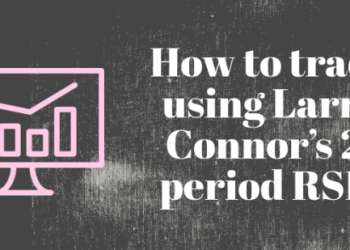A stop loss is a type of order that instructs a broker to stop losses incurred by a trader from an open position. It is measured from an entry position using a specific number of pips, usually based on levels of support and resistance.
Stop losses can be applied to both long and short positions and are used by traders to limit their losses. You should, therefore, set stop losses based on the amount of loss that you would be willing to take for a particular trade.
Take profit, on the other hand, is an instruction to a broker to close an open position once the trade generates a specified amount of profit. Like a stop loss order, a take profit measures the target from the entry point and can be applied to both long and short positions.
The importance of take profit and stop losses
Trading without either a stop loss or take profit exposes a trader to big losses and diminished profits. Without a stop loss, a trader can potentially lose all their capital from successive losses. On the other hand, opening a trade without a profit target can turn a winning position into a loss-making position if the market reverses.
How to set up a stop loss
A stop loss is an automated way of ensuring that you limit your losses in case the market goes against you. Importantly, it is an effective way of reducing emotional interference with your trade setup.
It helps you prevent a situation whereby you may fall for the temptation of exiting a potential profit-making trade prematurely out of emotion-driven fear. After spending much of your time setting up a trade, it wouldn’t be prudent to hand over your trading strategy to emotions.
That is not to say that you should throw caution to the wind. Even risk-averse investors need a strategy. A stop loss is an effective tool in helping traders reduce their risk exposure by strictly taking the amount of risk they can handle. It is simply a way of acknowledging that the market may not always go according to your wishes.
A stop-loss gives you the confidence to be patient enough to let your trade setup play out to a conclusion.
Your stop loss position should be guided by the signal sent from your technical analysis by the indicators you used. You should also be guided by your understanding of the current market conditions and the potential implications of a change to the fundamentals. Therefore, you should not be affected by emotions or the amount of money you wish to make from a trade.
Trailing stops
Trailing stops are unique types of stops in that they are dynamic, and they keep adjusting their position as a specific target is met. The targets can be guided based on a specific number of pips or a percentage price target. For instance, if you set your trailing stop with 50 pips, it means that the stops will be trailed 50 pips away from the current price whenever the market goes in your favor. If the market moves toward your trailing stop, the pending order doesn’t move.
How to set take profit
Any attempt to generate profits is usually accompanied by a significant level of risk. Therefore, whenever you set up a take-profit level, you should be guided by your risk tolerance. For example, risk-averse traders place their take ,profit levels further from the entry point.
Take profit is also an effective way of ensuring that emotions do not interfere with your trading strategy because it will only be executed at a predetermined level based on technical and fundamental analysis.
Below are some of the key factors that inform profit-taking levels are discussed below:
Using resistance and support levels
This is one of the most favored techniques in forex trading. It is a predictive profit-taking technique based on established levels of support and resistance. Traders put profit-taking levels near resistance levels during an uptrend and around support levels during a downtrend.
Using Fibonacci retracements
Fibonacci levels help traders identify the likely areas of rebounds or breakouts, which traders can use to identify where to take profit. For example, in a trending market, levels 50.0%, 38.2 and 61.8% are important and often indicate a breakout when breached.
Using Moving Average indicators
Moving averages measure market momentum by evaluating the variations in the traded volume over different periods. For example, when using a 50-period and 20-period Simple Moving Average (SMA) the crossing of the long-period MA by the short-period MA from bottom to top is a strong indicator of a possible bullish breakout. Therefore, a trader may put the take-profit level in anticipation of a bullish rally.
In summary
Stop loss and take profit levels are essential to successful trading. They safeguard traders from excessive risk and protect their profits from market reversals. They also help traders prevent emotional interference with their strategy.







